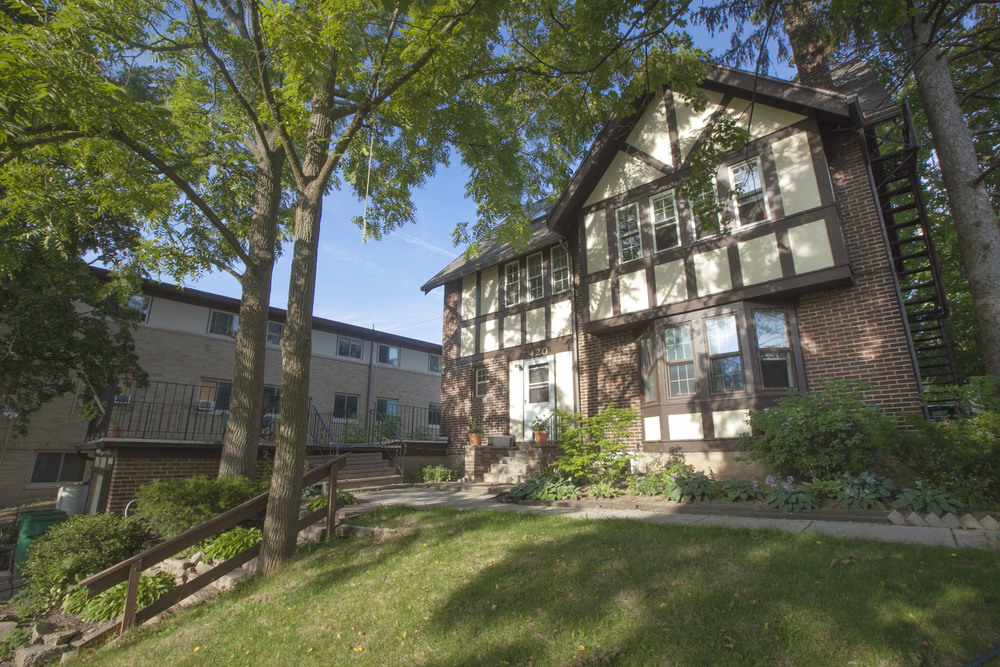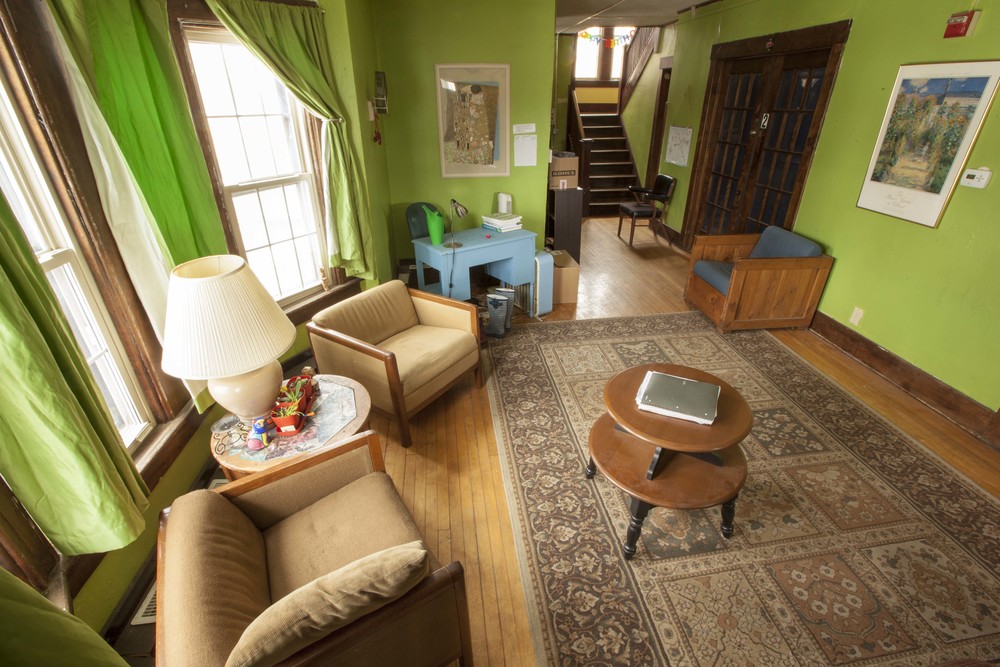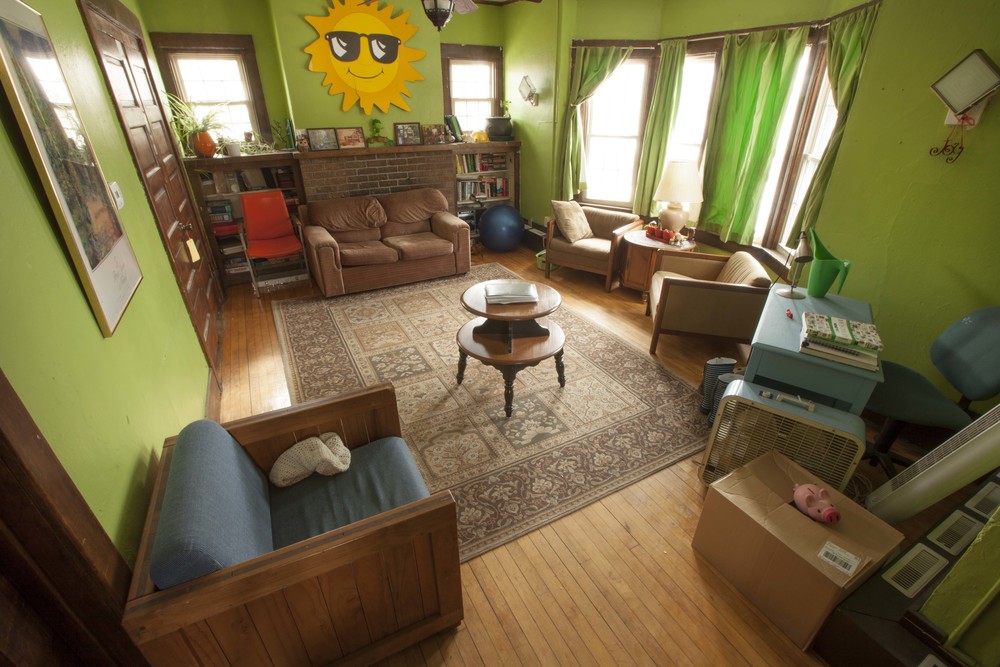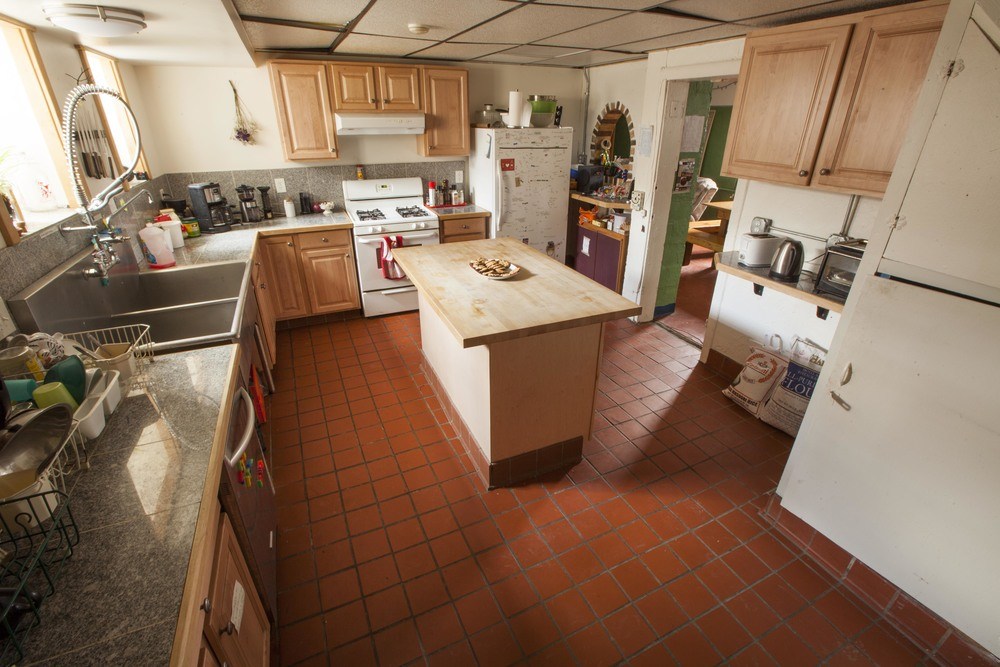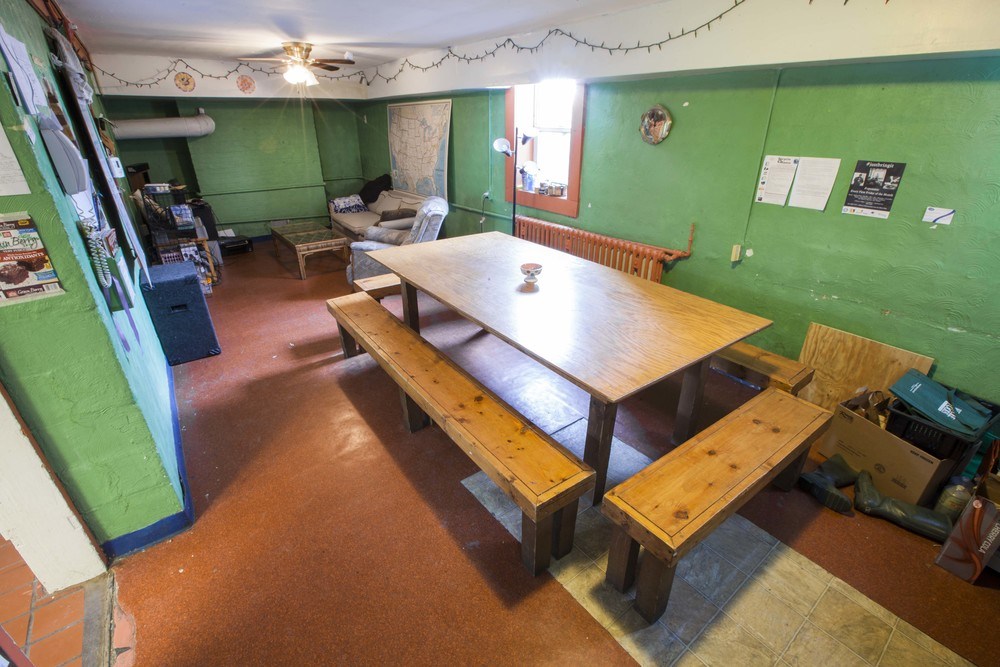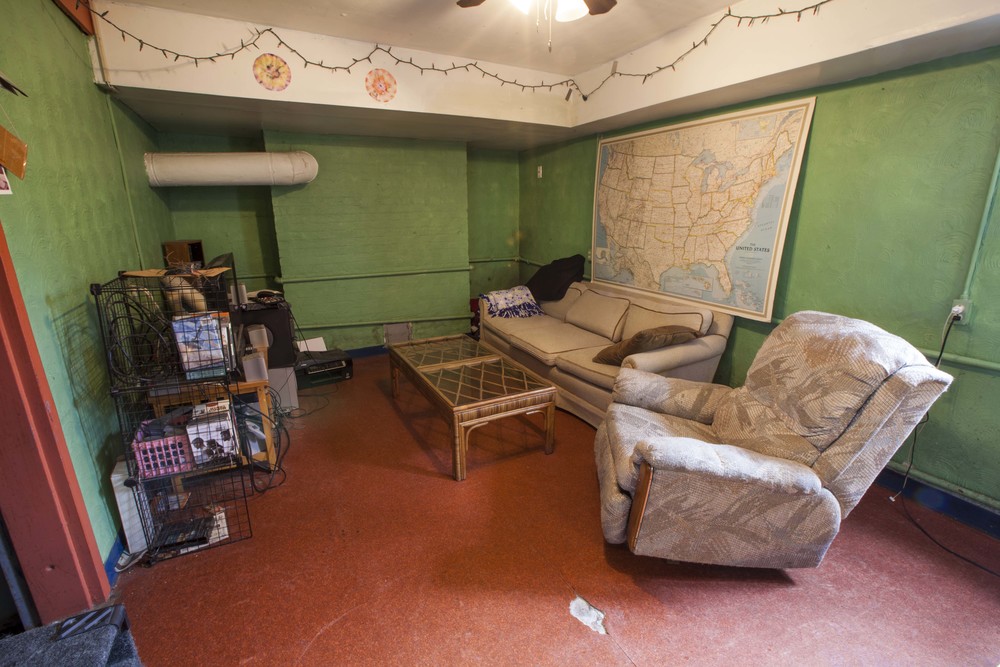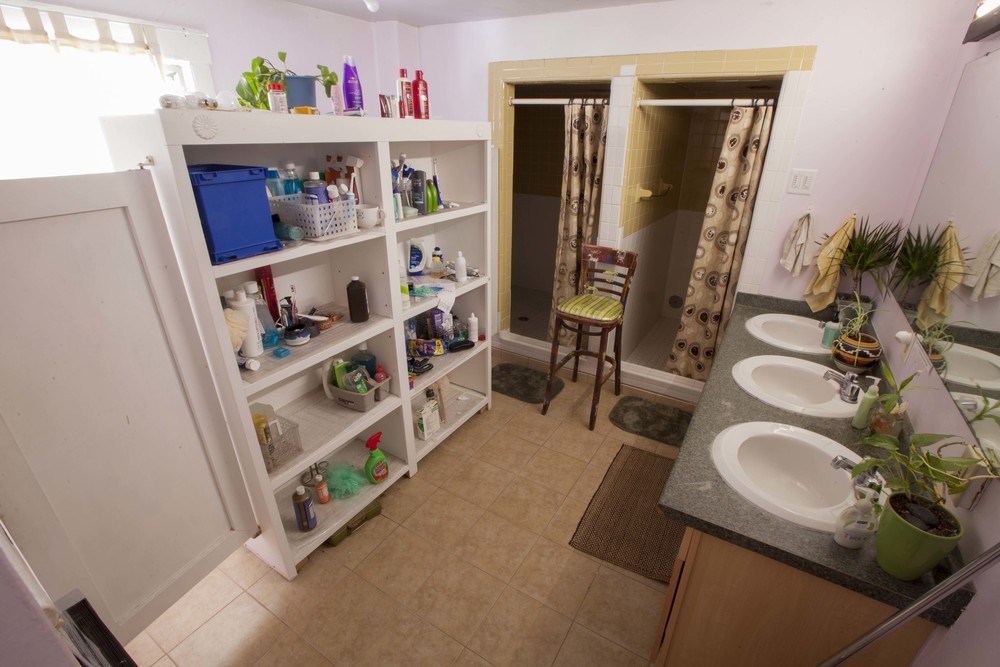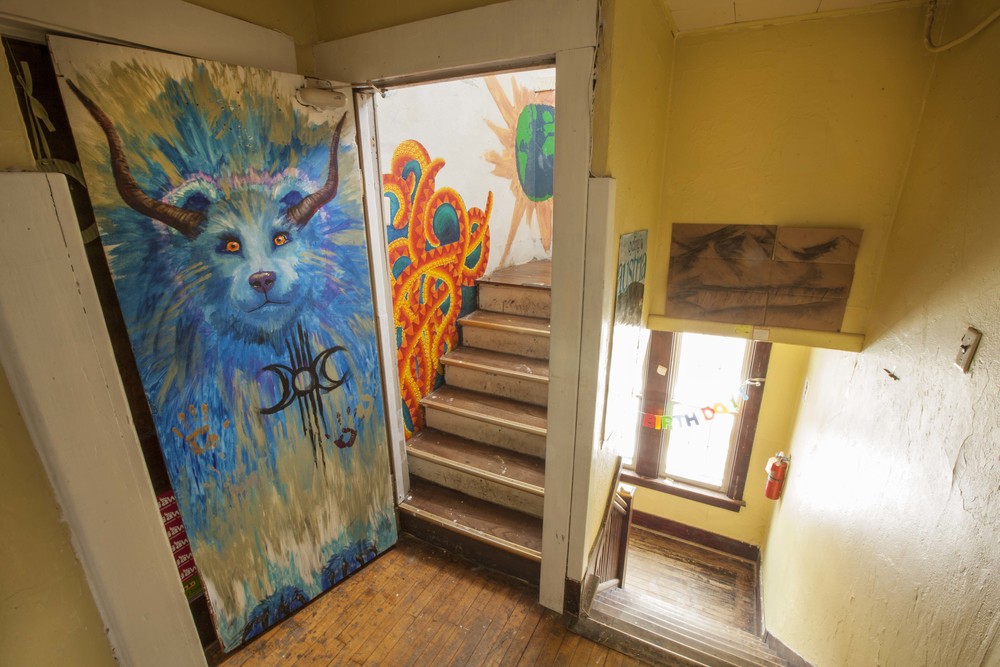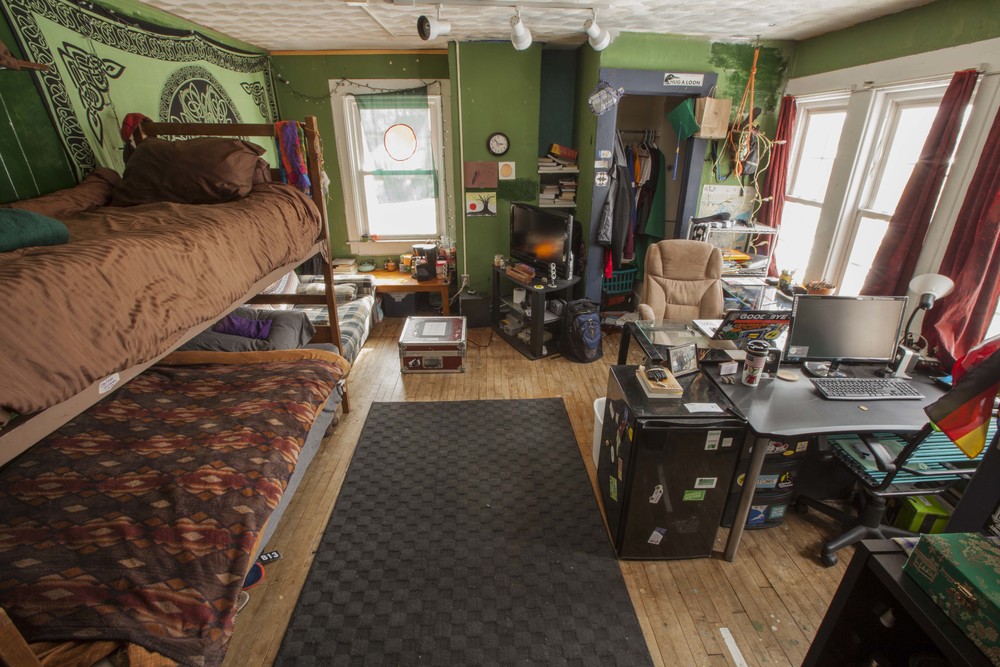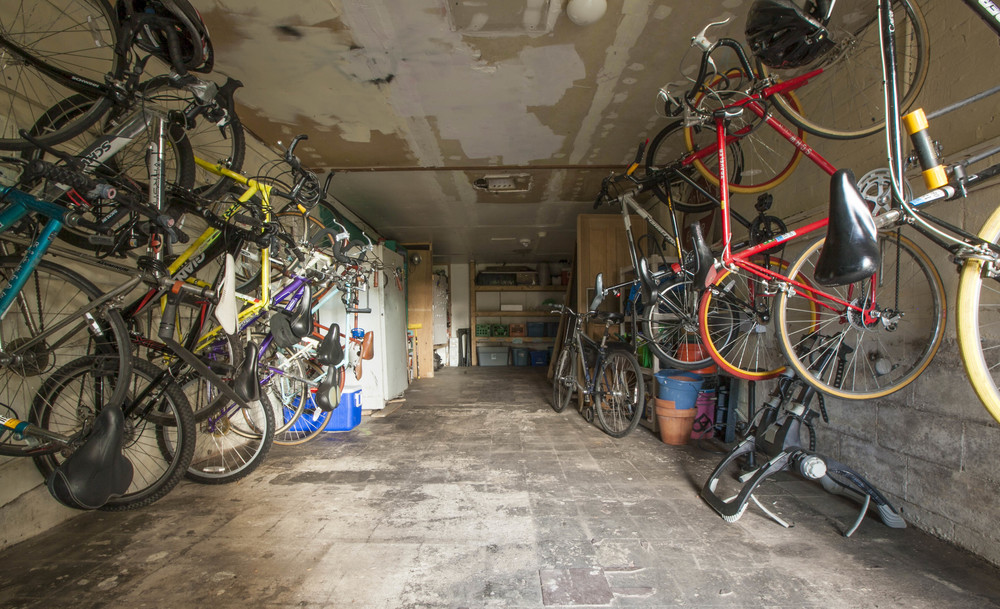Raft Hill
Members: 12 (8 singles, 2 non-singles)
Approx. cost: Single-$547/mo Non-single-$392/mo
Floors: 3
Bathrooms: 3
Mealplan: Yes, vegetarian and vegan options
Refrigerators: 3
Laundry: 1 washer, 1 dryer
Common Areas: Living room, dining room, kitchen, library, porch
Highlights: Bay window, sun deck, garden, dishwasher, garage
Bus Line: Abbot Rd Bus Line
Nearby Locations: Valley Park and Tennis Courts, Crunchy’s (bar), Biggby Coffee Shop, Hannah Community Center
Blocks from campus: 2
Raft Hill accommodates 12 members; 6 of the spots are reserved for graduate students. Raft tends to be a quieter, studious house, but evenings in our common spaces consist of house dinners, video games, and Rose-and-Thorn recaps. We grow produce in our summer garden and enjoy our large deck year round. Connecting to our communities is easy since campus is a block away and the east Lansing farmer’s market is in view from our front door. For anyone that needs a refuge in the storm of school, this raft is for you!
Take a Virtual Tour of Raft Hill.
Interested? Apply to the SHC first by clicking here. Then contact Eva, the Membership Officer, at rafthillmembership@gmail.com.
Raft Hill Gallery
History
This beautiful Tudor Revival home at 420 Evergreen was built in 1916 by Edward H. Ryder, an East Lansing mayor for seven terms, Professor and head of the History and Political Science Department of MSC (MSU), first Dean of the Liberal Arts division of the University, Chair of the board of the Peoples Church, and vice president of the East Lansing State Bank. In 1956, it was sold to the Alpha Sigma Phi fraternity, with the stipulation that it be named the Ryder House in perpetuity.
Motts House Co-op, established in 1947, bought the house after the fraternity went broke in 1964. George Motts had been an early co-op supporter and long-time faculty advisor to Elsworth House. Motts House folded in 1970, and the title for the property was transferred to a trustee group of alumni called the Motts House Association. The building served as a runaway shelter, called The Raft, for nine months until it collapsed itself. The house was then rented to Elyse Eisenberg who attempted to set up a home and center for women. This group stayed in the building until spring of 1972, at which time arrangements were made for a Chicano group to start a cooperative the following fall. In June of 1972, the Motts House alumni donated the property to SHC. However, the Chicanos had changed their mind about starting a co-op there. Because the people at Evergreen Co-op (then 458 Evergreen Ave) were having problems with the city as to whether they could continue to occupy their property, 420 was offered to them as a permanent home. They accepted this offer, and individual rooms were subleased through the summer. However, halfway through July, Evergreen Co-op learned that they would be able to re-lease their existing property for the upcoming year, and abandoned the move to 420 Evergreen.
That same summer, a group of male students originally from the Brody complex on MSU’s campus began organizing a new co-op at the house. They intended to make re-make it as a small co-op with only 12 members as it had been in the Motts years, and modeled the constitution and governance after Beal House, another small co-op. After a number of repairs to the house’s brickwork on the chimney and steps, portions of the stucco, interior, and a repainting, the house opened as Knight House, named after charter member David Knight, in fall of 1972. It was later renamed Narnia, after the Chronicles of Narnia books by C. S. Lewis.
The Green Earth Food Co-op operated out of the house’s basement, until it merged with Wolfmoon Food Co-op in 1972. In 1974, it was renamed Major Raoul Lufbery after a WWI fighter pilot whose picture was found in the attic of one of the co-ops. Lufbery failed in August of 1980 with a huge $4,000 debt due to poor member participation, responsibility, and payment to both the house and SHC. The house was closed down and underwent $13,000 in repairs and renovations, including the construction of a sundeck and fire escape, a vestibule at the front door, and a terraced garden.
The house was reopened by SHC in 1981 as Raft Hill, in honor of its days as a shelter for runaways. Mrs. Ruth Ryder St. John later chastised SHC for forgetting to keep the name Ryder House.
Raft Hill is currently a graduate student themed house, but undergrads looking for a quieter living space are also encouraged to apply.

